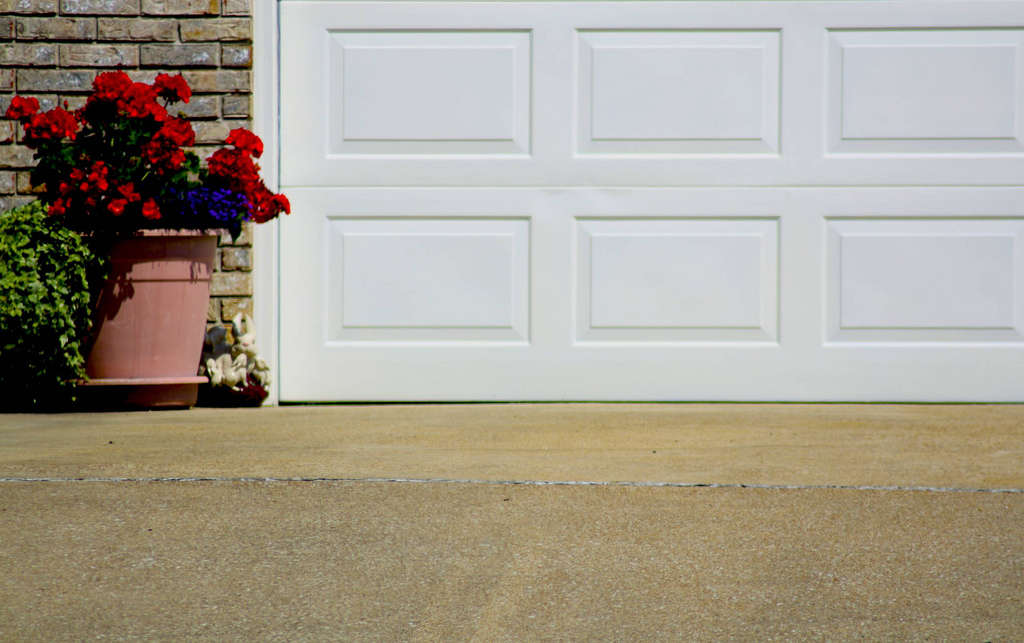6 Ways to Improve Garage Door Safety

It’s hard to imagine that your garage door could pose a safety hazard under the right circumstances. Nevertheless, countless people find themselves seriously injured due to a malfunction or a lapse of judgment when dealing with their garage doors. Injuries caused by automatic garage doors are responsible for a significant number of emergency room visits each year.
This isn’t to say that garage doors are inherently dangerous, but they must be treated with plenty of care and caution. The following tips will help ensure that your garage door not only remains in excellent condition but also stays safe enough to use without injury.
Keep Your Hands and Fingers Away From Pinch Points
Your garage door features a variety of joints and crevices that could serve as pinch or crush points. These include areas where garage door panels join together. It’s all too common for homeowners to inadvertently place their fingers between panel sections while attempting to manually pull down the door, resulting in serious hand or finger injury.
If you ever need to manually close or open your garage door, it’s much safer to do so using the garage door’s attached handles or by grabbing a safe gripping point as indicated by the garage door manufacturer. It’s also a good idea to avoid placing your hands and fingers between cables, hinges and other sections of the garage door that could pose a crush or pinch hazard.
Keep an Eye on Your Garage Door Cable
Like other parts of your garage door, the cables can get worn out with enough time and usage. Rusted, frayed and/or kinked cables are often a ticking time bomb, with each day bringing them closer to the brink of failure. Steel cables in these states lack the structural integrity needed to support your open garage door.
If your garage door cables appear to be in bad shape, you should have them replaced by a professional as soon as possible.
Maintain and Test Your Safety Sensors
A typical garage door weighs anywhere from 250 pounds to 400 pounds — that’s a lot of weight for your automatic garage door opener and your garage door springs to support. As your garage door closes, the last place you want to be is in its immediate path, since the sheer weight alone could pose a crushing hazard for anything or anyone underneath.
For this very reason, just about every garage door opener comes equipped with a built-in auto-reverse feature. This feature uses a pair of infrared safety sensors to detect objects within the garage door’s path, allowing the door to automatically reverse direction and avoid crushing any objects that happen to be in the way.
It’s important to have your safety sensors checked and tested on a regular basis to ensure that this feature remains functional. Over time, the safety sensors can get covered in dirt and grime, which could allow the garage door to reverse on its own.
Have Your Garage Door’s Balance Checked
Keeping your garage door properly balanced is also important for preventing injuries. A garage door can lose its balance due to a gradual loss in spring tension, often resulting in one side of the garage door falling farther than the other. This causes the garage door to get hung up in its own tracks as it opens or closes. Too much tension due to improper spring adjustment can also cause the door to drift open.
If your garage door appears crooked or you’re having a hard time opening and closing your garage door, you may want to have your technician check its balance. If necessary, the technician can also rebalance your door, restoring it to its safe operation.
Leave Spring-Related Repairs to the Experts
You may be tempted to adjust or even replace your own garage door springs, but there’s a good reason why you should leave these tasks to the professionals. For the average do-it-yourselfer, performing maintenance on garage door springs can be a dangerous task due to the potential for injury.
Torsion springs are especially dangerous to handle since they’re kept under tremendous tension. A sudden breakage can easily result in serious injuries, especially if it occurs during the middle of an adjustment or removal.
If you need new springs, you’re better off having your garage door technician take care of the installation and maintenance. Your technician will have the tools and training needed to safely deal with your garage door springs, plus you’ll have peace of mind knowing that the job was done correctly the first time around.
Don’t Skip Out on Regularly-Scheduled Maintenance
Skipping out on regularly-scheduled maintenance for your garage door not only makes it unsafe to be around, but it can also shorten its overall lifespan. A properly designed and well-maintained garage door can last for several decades. It’s usually a good idea to have a technician take an up-close look at your garage door at least once a year.
For more information on improving garage door safety, get in touch with the helpful pros at Shank Door today.

